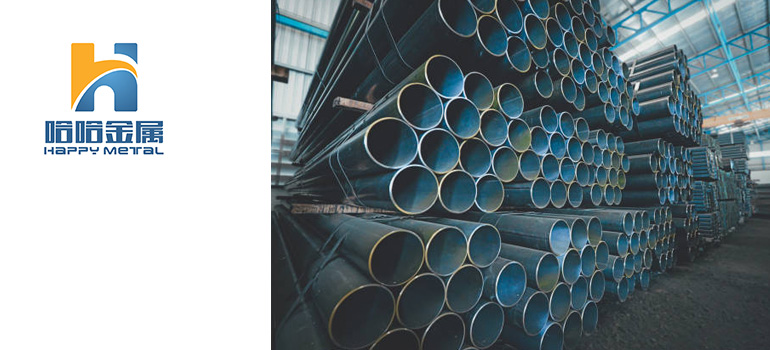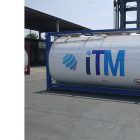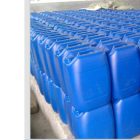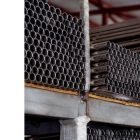Summary:
Complete Guide to ASTM A106 Carbon Steel Pipe: Uses, and Benefits
What is ASTM A106 Carbon Steel Pipe?
Primary Applications of ASTM A106 Carbon Steel Pipe
Benefits of Using ASTM A106 Carbon Steel Pipe
What is ASTM A106 Carbon Steel Pipe?
ASTM A106 carbon steel pipe is a type of pipe manufactured according to the standards set by the American Society for Testing and Materials (ASTM). It is specifically designed for high-temperature and high-pressure applications, making it a crucial component in industries such as oil and gas, petrochemicals, and power generation. The ASTM A106 standard includes three different grades of carbon steel pipe: Grade A, Grade B, and Grade C, with Grade B being the most commonly used. The primary characteristics of ASTM A106 pipes include excellent high-temperature resistance, durability, and the ability to withstand high-pressure environments, which is why it is commonly used for transporting steam, hot oils, and other industrial fluids.
Primary Applications of ASTM A106 Carbon Steel Pipe
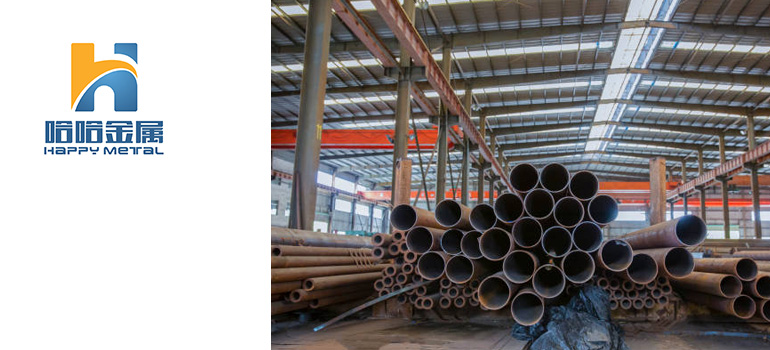
Industrial Uses of ASTM A106 Carbon Steel Pipe
ASTM A106 carbon steel pipe is widely used across many industries due to its strength, durability, and ability to handle high-pressure and high-temperature environments. It is particularly favored in industrial settings that require reliable material for fluid and gas transportation under extreme conditions.
One of the most common uses of ASTM A106 pipes is in chemical processing plants, where corrosive chemicals need to be transported at high temperatures. The material’s resistance to internal pressure and ability to withstand thermal cycling makes it ideal for carrying liquids and gases, even when those substances are highly volatile.
In industrial steam systems, especially in power generation plants, ASTM A106 pipes are used to transport steam to turbines, condensers, and other high-pressure systems. Given that steam systems often operate at high pressures and temperatures, the strength and heat-resistance of ASTM A106 Grade B and Grade C pipes ensure safe and efficient operation. These pipes can also be used for heating systems in large industrial facilities, providing both heat and hot water distribution.
Use in High-Temperature Environments
One of the standout features of ASTM A106 carbon steel pipe is its excellent performance in high-temperature applications. This material can handle temperatures up to 750°F (400°C) without significant deformation, making it an ideal choice for industries that deal with extreme heat.
For example, boiler systems in power plants rely on ASTM A106 carbon steel pipes to withstand the high-pressure and high-temperature steam used to generate electricity. Similarly, in furnaces and kilns, where intense heat is required for industrial processes, these pipes are used to carry fluids or gases at temperatures well beyond what many other materials can handle.
Due to its ability to maintain its strength at elevated temperatures, ASTM A106 pipe is commonly used in petrochemical refineries for transporting hot, volatile substances such as oil, gas, and other chemical byproducts. Whether it’s for refining crude oil or processing chemicals, the high thermal resistance and reliability of ASTM A106 pipes make them a preferred material for these applications.
Importance in Oil and Gas Pipelines
In the oil and gas industry, ASTM A106 carbon steel pipes are essential for the transportation of raw materials such as crude oil, natural gas, and refined products. These pipes are used in both onshore and offshore pipelines, often running over long distances or through challenging environments.
Offshore drilling rigs use ASTM A106 carbon steel pipes in their deep-water exploration and extraction systems, where the pipes are exposed to both high pressure from the surrounding water and extreme temperatures from the fluids being pumped. The pipes must not only withstand pressure but also resist corrosion caused by saltwater exposure.
Oil refineries also rely heavily on ASTM A106 pipes for carrying hot, pressurized materials throughout their operations. These pipes are used in refining units, reactors, and storage tanks, where the transportation of volatile liquids and gases must be done safely and reliably.
In addition, these pipes are used in natural gas pipelines to transport gas over long distances from extraction sites to end-users. The combination of high strength, heat resistance, and ability to endure rough external environments makes ASTM A106 carbon steel pipe indispensable in the energy sector.
Use in HVAC and Heating Systems
ASTM A106 carbon steel pipes are also widely employed in HVAC (Heating, Ventilation, and Air Conditioning) systems for both commercial and industrial purposes. These pipes are used for hot water and steam distribution, where high pressure and temperature conditions are common. For example, in large-scale commercial buildings or industrial complexes, where central heating systems require a material that can handle both high temperatures and internal pressure, ASTM A106 pipes provide a durable and cost-effective solution.
District heating systems, which deliver hot water or steam to multiple buildings or facilities, also utilize ASTM A106 carbon steel pipes. These systems often operate under high pressure and temperature, making ASTM A106’s ability to resist thermal expansion and pressure fluctuations a significant advantage.
Power Generation and Energy Sector
The power generation sector is one of the largest users of ASTM A106 carbon steel pipe, especially in steam and nuclear power plants. The pipe is essential for the distribution of steam, water, and other fluids under high-pressure conditions.
Steam turbines in power plants are driven by high-pressure steam generated from boilers. ASTM A106 pipes are crucial for transporting this steam at temperatures that can exceed 600°F (315°C) and pressures up to 2,000 psi. The ability of these pipes to maintain their strength under such conditions makes them indispensable in maintaining the integrity and efficiency of power plant systems.
In nuclear power plants, where reliability and safety are paramount, ASTM A106 pipes are used in steam generation systems to manage the transfer of heat from nuclear reactors. These pipes must meet stringent safety standards, and ASTM A106’s ability to maintain its properties under extreme conditions makes it an ideal choice for these high-risk environments.
Benefits of Using ASTM A106 Carbon Steel Pipe
High Durability and Strength
One of the primary reasons why ASTM A106 carbon steel pipe is so widely used is its exceptional durability and strength. This pipe material is engineered to withstand high pressure, high temperature, and the harshest operating conditions without compromising its integrity.
- Strength at Elevated Temperatures: ASTM A106 pipes, particularly Grades B and C, are designed to maintain their strength even at temperatures exceeding 750°F (400°C). This makes them ideal for high-temperature applications like power generation, steam lines, and chemical processing plants.
- Resistance to Pressure: These pipes are also capable of withstanding extremely high pressures, making them well-suited for industries like oil and gas, where pressure can range in the thousands of psi (pounds per square inch). Whether it’s transporting crude oil, natural gas, or hot steam, ASTM A106 pipes excel in maintaining their structural integrity under intense pressure.
The combination of high strength and durability means that ASTM A106 carbon steel pipes have a long service life and require fewer replacements, thus reducing long-term operational costs.
Cost-Effectiveness
ASTM A106 carbon steel pipes offer a great balance between cost and performance. While stainless steel pipes or alloy pipes may offer even higher levels of corrosion resistance or temperature resistance, they often come at a much higher price point.
- Lower Initial Costs: Carbon steel is generally more affordable than other materials like stainless steel or alloys, making it an attractive option for industries working within tight budgets.
- Long-Term Value: Although carbon steel may not have the same level of corrosion resistance as some other materials, it still performs well in many applications when properly maintained. Additionally, its low cost and long lifespan make it a cost-effective solution, particularly in industrial applications where large quantities of pipe are required.
This cost-effectiveness makes ASTM A106 carbon steel pipes an ideal choice for large-scale projects, especially in sectors like oil and gas, power generation, and petrochemicals.
Resistance to Corrosion and Wear
While carbon steel is more prone to corrosion than materials like stainless steel, ASTM A106 pipes offer adequate corrosion resistance for many applications, especially when combined with coatings or proper maintenance practices.
- Corrosion Resistance with Coatings: To further enhance its performance, ASTM A106 carbon steel pipe can be coated with materials like epoxy or polyethylene to improve its ability to resist corrosion in highly corrosive environments. These coatings can greatly extend the pipe’s lifespan, especially in applications exposed to saltwater, chemicals, or harsh weather conditions.
- Wear Resistance: The material’s hardness and strength also make ASTM A106 pipes highly resistant to wear and abrasion, particularly in environments with heavy flow of abrasive fluids or gases. This makes it ideal for applications like transporting slurry in mining or petrochemical plants, where the material may come into contact with solid particles.
In sectors like oil and gas or chemical processing, the combination of wear and corrosion resistance ensures that ASTM A106 pipes can operate effectively for extended periods, reducing downtime and maintenance costs.
Versatility and Wide Range of Applications
Another major benefit of ASTM A106 carbon steel pipe is its versatility. This material can be used in a wide variety of applications across different industries due to its range of sizes, grades, and pressure ratings.
- Flexible for Different Applications: ASTM A106 pipes can be manufactured in various grades (Grade A, Grade B, and Grade C), which allows for customization based on specific needs. Grade A is suitable for lower-pressure applications, while Grade B and Grade C offer higher strength and are ideal for high-pressure and high-temperature environments.
- Variety of Industries: Whether it’s the oil and gas industry, chemical processing, power generation, HVAC, or construction, ASTM A106 pipes are capable of meeting the unique needs of a wide range of sectors. Their ability to transport both gases and liquids—under high pressure or temperature—ensures that this material is a go-to solution for industries with demanding requirements.
Excellent Weldability
Another key benefit of ASTM A106 carbon steel pipe is its excellent weldability. Carbon steel pipes are relatively easy to weld compared to other materials like stainless steel or high-alloy pipes.
- Ease of Fabrication: ASTM A106 pipes can be welded using common welding methods such as TIG (Tungsten Inert Gas) and MIG (Metal Inert Gas) welding. This makes them highly adaptable to various fabrication needs, including complex pipe systems or custom fittings.
- Reduced Welding Stress: Due to the low carbon content in ASTM A106, the pipes exhibit low welding stress, making them less prone to distortion during the welding process. This helps ensure that welds remain strong and resistant to cracking or failure, which is critical for high-pressure applications.
Weldability is particularly important in industries like petrochemicals, where large pipe networks must be assembled on-site and welded together, or in construction projects where custom pipe systems are required.
High Performance in Extreme Conditions
ASTM A106 pipes are designed to perform well in extreme environmental conditions. Their ability to maintain integrity under both high temperatures and high pressures makes them an excellent option for harsh environments.
- Heat Resistance: These pipes are capable of withstanding hot fluids, steam, and gases at temperatures up to 750°F (400°C). This is crucial in industries such as power generation and refining, where hot and pressurized substances are constantly in motion.
- Pressure Resistance: With the right grade, ASTM A106 pipes can handle pressures up to several thousand psi. This is particularly important in industries like oil and gas, where pipelines often operate under very high pressure, both onshore and offshore.
The ability to perform well in extreme conditions makes ASTM A106 pipes indispensable in industries that require reliable, high-performance materials to maintain safety and operational efficiency.
Maybe you are interested in the following:Understanding Stainless Steel Pipe Classification Based on Application Needs

